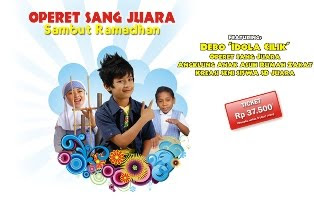My Indonesia
Indonesia, the largest archipelago and the fifth most populous nation in the world, has a total of 17,508 islands, of which about 6,000 are inhabited. Indonesia extends 3,198 miles (5,150km) between the Australian and Asian continental mainland and divides the Pacific and Indian Oceans at the Equator. With a total land area of 767,777 square miles (1,919,443 sq. km), its 190 million inhabitants are made up of 300 ethnic groups who speak an estimated 583 different languages and dialects. There are five main islands in Indonesia. These are: Java, Sumatra, Kalimantan, Sulawesi and Irian Jaya.
Across its many islands, Indonesia consists of distinct ethnic, linguistic, and religious groups. The Javanese are the largest and most politically dominant ethnic group. Indonesia has developed a shared identity defined by a national language, ethnic diversity, religious pluralism within a majority Muslim population, and a history of colonialism and rebellion against it. Indonesia's national motto, "Bhinneka Tunggal Ika" ("Unity in Diversity" literally, "many, yet one"), articulates the diversity that shapes the country. However, sectarian tensions and separatism have led to violent confrontations that have undermined political and economic stability. Despite its large population and densely populated regions, Indonesia has vast areas of wilderness that support the world's second highest level of biodiversity. The country is richly endowed with natural resources, yet poverty is a defining feature of contemporary Indonesia.
Across its many islands, Indonesia consists of distinct ethnic, linguistic, and religious groups. The Javanese are the largest and most politically dominant ethnic group. Indonesia has developed a shared identity defined by a national language, ethnic diversity, religious pluralism within a majority Muslim population, and a history of colonialism and rebellion against it. Indonesia's national motto, "Bhinneka Tunggal Ika" ("Unity in Diversity" literally, "many, yet one"), articulates the diversity that shapes the country. However, sectarian tensions and separatism have led to violent confrontations that have undermined political and economic stability. Despite its large population and densely populated regions, Indonesia has vast areas of wilderness that support the world's second highest level of biodiversity. The country is richly endowed with natural resources, yet poverty is a defining feature of contemporary Indonesia.
Saturday, July 11, 2009
Batik
Batik is a wax-resist dyeing technique used on textile. Due to modern advances in the textile industry the term has also been used for fabrics which incorporates the traditional batik patterns although not necessarily produced using the batik techniques. Silk batik is especially popular.
The word batik is thought to be derived from the word 'ambatik' which translated means 'a cloth with little dots'. The suffix 'tik' means little dot, drop, point or to make dots. Batik may also originate from the Javanese word 'tritik' which describes a resist process for dying where the patterns are reserved on the textiles by tying and sewing areas prior to dying, similar to tie dye techniques. Another Javanese phase for the mystical experience of making batik is “mbatik manah” which means “drawing a batik design on the heart”.Javanese traditional batik, especially from Yogyakarta, has special meanings which is rooted to the Javanese idea of the universe. Traditional colours include indigo, dark brown, and white which represents the three major Hindu Gods (Brahmā, Viṣṇu,and Śiva), and certain patterns can only be worn by royals. Other regions of Indonesia have their own unique patterns which normally take themes from everyday lives, incorporating patterns such as flowers, animals or people.
In Java, Indonesia, batik is part of an ancient tradition, and some of the finest batik cloth in the world is still made there. Batik has been both an art and a craft for centuries.
Contemporary batik, while owing much to the past, is markedly different from the more traditional and formal styles. For example, the artist may use etching, discharge dyeing, stencils, different tools for waxing and dyeing, wax recipes with different resist values and work with silk, cotton, wool, leather, paper or even wood and ceramics.
sources : www.expat.or.id, www.en-weikipedia.org, www.flikr.com
Labels: Indonesian Cultures
0 Comments:
Subscribe to:
Post Comments (Atom)







,+Jakarta.jpg)




Post a Comment